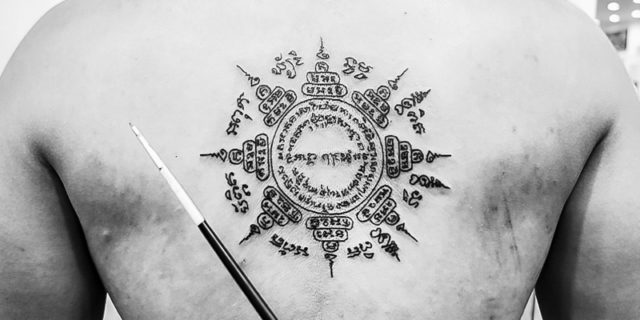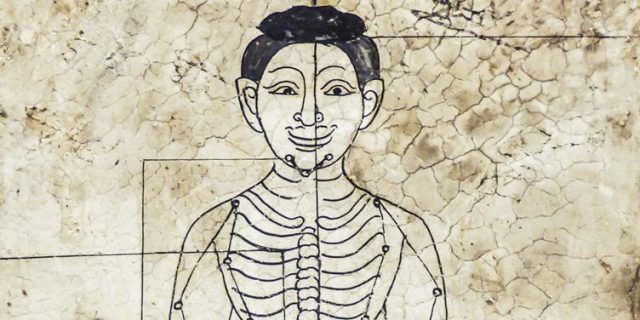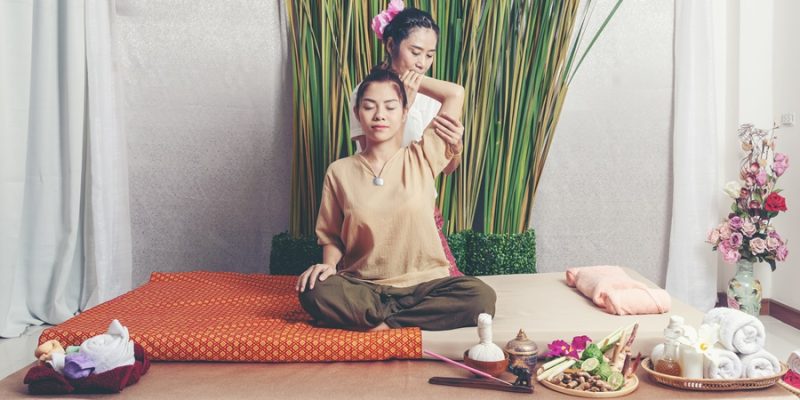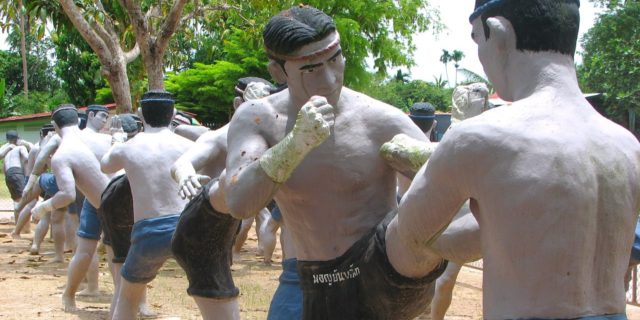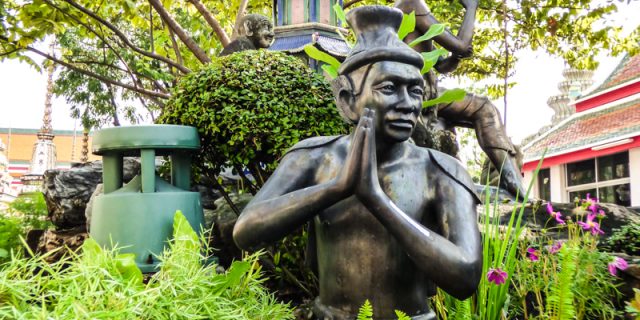
Muay Thai or Thai Boxing is the national sport of Thailand and it’s part of the country’s cultural heritage with strong links to both Buddhism and Thai Traditional Medicine.
The word “Muay” literally means “combat” or “boxing” and it derives from the Hindu Sanskrit word “Mavya” which means “unite together.” Muay Thai is also called the “art of eight limbs” which is derived from the fact that a fighter can strike using the hands (including fists), elbows (including forearms), knees (including shins), and legs (including feet) using eight points of contact or eight limbs – four on each side of the body – in total.
History and Context
The Muay Thai martial art was originally created as a functional striking system, with and without weapons, used by the Thai army and the Thai people to defend themselves and their families from enemy invasions.
In peace times, the soldiers practiced their skills in boxing competitions, which were organized during religious festivals or other special occasions, usually held at temples, both for the amusement of the royalty and common people.
Thai Herbal Medicine, Thai Traditional Massage and Thai Yoga (Reusi Dat Ton Self-Stretching) played an important role in combination with Muay Thai. Soldiers needed healing after fights, needed to keep fit and flexible, and the Thai Traditional Healing Arts were instrumental in doing so.

Besides the connection with the Thai Healing Arts, there’s also a spiritual, meditative aspect. For instance, Muay Thai fights begin with the Wai Khru and Ram Muay, which incorporate grace and respect to the teachers, in addition to asking for guidance, force and protection. Muay Thai also draws from Buddhist meditation techniques in cultivating a concentrated and mindful attitude during training and fights.
As with many of the other arts in Thailand, the age and history are rather uncertain, and depending on the source estimations range between a history of 1000 to 3000 years old. Like with Thai Traditional massage, much of the written history got lost after the Burmese destroyed the ancient Siam capital Ayutthaya in 1767. In any case, Muay Thai developed continuously, seeing changes and additions over time, just like all the other Thai arts.
Over time, Muay Thai slowly evolved to being a competitive sport, besides being used as a weapon in wars or a way to settle civil disputes in preceding eras. In the old days, competitive fights could go on until one of the fighters was dead. The fighters traditionally wore cotton cloths wrapped around their hands, dipped in glue, and rolled in sand with broken glass.
In the 1930s however, boxing gloves were introduced and the fights changed in style and appearance, fighting over rounds with rests in-between. Also, a system of weight categories was introduced with fists, feet, shins, knees and elbows permitted being used during fights. Today, not only globally, Thai boxing is also very popular in Thailand, with daily fights in prime stadiums in Bangkok, on TV, and in fact, all across the country.
In Muay Thai, style, strategy and demeanor when fighting are rather important. It’s not only about hitting and defeating the opponent, but also about the way the art is performed. Besides of needing to be powerful and effective, the public wants the fights to be aesthetically pleasing at the same time.
Today, besides being an immensely popular folk sport, we see Muay Thai increasingly positioned as a fitness modality, entering the wellness, retreat and resort business. Many of these relax centers in Thailand offer Muay Thai classes or activities to get to know the art and to improve fitness and wellbeing.
Health Benefits of Muay Thai
Increased Cardiovascular Performance
Muay Thai is both an aerobic and anaerobic modality, placing significant stress on the cardiopulmonary systems. With regular continued practice, the body will adapt better to the demands of the sport, improving overall cardiovascular performance.
Strength of the Legs
As Muay Thai is a lot about kicking and footwork, the muscles of the legs, and generally the lower body, are strengthened and better toned.
Core Balance and Core Muscle Strength
The many rotational movements while doing Muay Thai naturally increase the need of a “stable center.” Not only the abdominal muscles, but the whole area of the “trunk” is strengthened and becomes more balanced.
Better Hip Mobility
The many Muay Thai kicking and kneeing movements promote hip mobility.
Fighting Overweight and Obesity
Being such a complete and intensive activity, regular Muay Thai training can help significantly with reducing overweight and getting obesity manageable.
Boosting Self-confidence
Medical research has shown that learning how to defend yourself boosts self-confidence and self-esteem levels. Additionally, for those who gain a better concentration, lose weight and/or become more fit doing Muay Thai, increased self-confidence will be the natural outcome.
Concentration and Mindfulness
Authentic Muay Thai training includes drawing from Buddhist meditation techniques, such as Vipassana, in cultivating a concentrated and mindful attitude both during training sessions and fights.
Stress Relief
Like with many other endurance sports, Muay Thai offers an outlet for both physical and mental stress. Due to the dynamic nature of the sport, one doesn’t have too much time to be occupied mentally or psychologically, needing to just concentrate in and on the moment, thereby giving deep mental rest and relaxation to the practitioner.









